Gophers
CHARACTERISTICS OF GOPHERS IN MINNESOTA
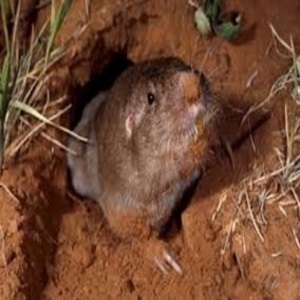
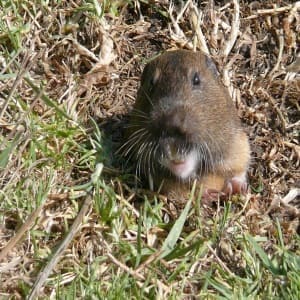
Pocket gophers, commonly referred to as just gophers, are known for their extensive tunneling activities. There are about 35 species pocket gophers distributed across North and Central America. In Minnesota, there are 2 species of gophers including the plains pocket gopher and the northern pocket gopher. The northern pocket gopher is quite rare and isolated to Northwestern Minnesota with the plains pocket gopher commonly found throughout the Minneapolis-St. Paul metropolitan area. The thirteen-lined ground squirrel or striped gopher is also found in our area. In Minnesota, the most successful approach to preventing gopher property damage is through a dedicated in season gopher trapping and control program.
Mature plains pocket gophers are about 10 to 12 inches long and may weigh up to one pound. They have small eyes and a short hairy tail, which they use to feel around tunnels when they walk backward. Their brown fur closely matches the color of the soil in which they live. Identifying characteristics include large cheek pouches from which the word “pocket” is derived. These pouches are fur-lined, can be turned inside out and extend from the mouth back to the shoulders.
The lifespan of a pocket gopher is about five years and they are active year-round. Minnesota Gophers breed once a year and give birth to 3 to 4 young per litter. The young develop rapidly and by eight weeks are weaned and ready to establish their own burrows. The young typically disperse in late summer and early fall. Gopher control consisting of trapping is important to prevent their proliferation.
Unlike moles, which consume worms and insects, gophers are herbivores and eat many types of plants. This includes roots, bulbs, and other fleshy plant portions. They also eat common garden vegetables that grow beneath the ground including carrots, potatoes, and onions.
GOPHER PROPERTY DAMAGE IN MINNESOTA
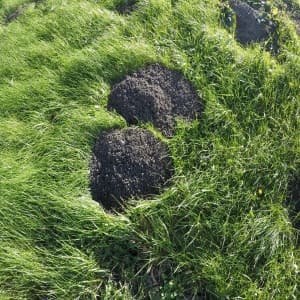
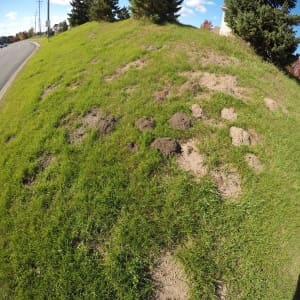
Gophers in Minnesota create a network of tunnel systems that provide protection and a means of collecting food. Their tunnels consistently intersect and vary in both length and depth. Gopher tunnels are typically larger in diameter and tend to be located deeper than mole tunnels. Unlike mole tunnels, gopher tunnels are not visible above ground. Gophers dig their tunnels with their front feet and teeth. Their lips close behind their incisors while they dig to keep dirt out of their mouths. Soil is pushed to the surface, forming fan-shaped piles of dirt or “gopher mounds.” Mounds are usually the first visual sign of gopher activity. Above all, this is an early indicator of needed control and removal efforts. When active, gophers may create many mounds in a day and within a year can bring several tons of dirt to the surface.
Damage to vegetable gardens and flower beds is very common in Minnesota. Clipped seedlings and shrubs sheared just above ground level as well as root damage are common. Extensive gopher damage can occur quickly and be expensive to resolve. Gophers often follow infrastructure within the ground including water and sewer lines. They target irrigation as they need fresh water. Gophers will often locate and cut through pipes or electrical systems associated with wells, pumps, and sprinkler systems. The first indication of gopher damage is typically a dead zone of brown grass caused by a break in a sprinkler system. Erosion or sinkholes can occur as water is diverted from these leaking freshwater systems. If they hit a power or internet cable line, it will likely lead to service disruption and warrant a costly, inconvenient repair bill.
As gophers remove significant amounts of soil from below, weight bears down from above and structural damage can occur to concrete or asphalt including sidewalks, driveways, and roads. Parks, schools, and municipal playing fields can become overrun with gopher mounds and declared off-limits for safety reasons. They can damage trees in orchards, nurseries, and windbreaks by feeding on the roots. Gophers can destroy pastures leaving behind holes that endanger horses and farm animals. If not eliminated, gophers can establish a damaging tunnel network. They will reproduce and become difficult to control. Gopher tunnels attract other nuisance animals like snakes, shrews, voles, and mice. If you live in Minnesota and have gopher property damage, you should take gopher control and removal action through a professional gopher trapping program.
ADDITIONAL RESOURCES
A few additional resources to help you learn more about gophers are as follows:
Metro Mole Control as seen on KSTP 5 Eyewitness News
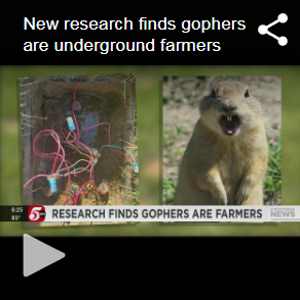
Wikipedia. “Plains Pocket Gopher”
W.F. Andelt and R.M. Case. Colorado State University Extension “Managing Pocket Gophers”
CONTACT US
For a free, no-obligation consultation/service estimate, please complete our information request form, email us at [email protected] or call us at 763-350-0331.

